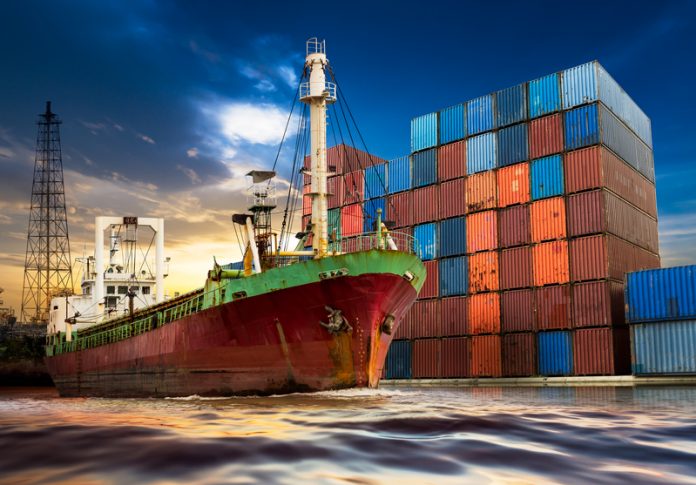Mr Kitack Lim, Secretary-General of the International Maritime Organization (IMO), looks ahead to the challenges for international shipping as the next decade approaches
Shipping is the backbone of international trade, with 10.7 billion tonnes of commodities carried by sea annually. Forecasts are for sustained growth. Passenger ships carry millions of people each year.
As the global regulator for shipping, the International Maritime Organization (IMO), a specialised agency of the United Nations, has a clear responsibility to ensure shipping is safe, secure, efficient and sustainable. The IMO has been very successful to date in developing a comprehensive set of standards covering everything from ship design and construction through to seafarer training and environmental issues.
During 2019, the shipping industry must prepare for a milestone ruling which will cut sulphur oxide emissions from ships substantially from 1 January 2020, with significant benefits to human health and the environment. Simply put, the rule will cut harmful air pollution from ships. The 80% cut in the upper limit of the sulphur content in ships’ fuel-oil (to 0.50% m/m from 3.5% m/m) has become known universally as “IMO 2020”.
First taken in 2008 and then confirmed in 2016, this landmark decision shows IMO’s continuing commitment to ensuring shipping meets its environmental obligations. Everyone involved, including refineries, shipowners and bunker suppliers (who supply fuel oil to ships) must act to implement the change during 2019. The majority of ships will need to clean their fuel tanks and then load them with compliant fuel oil before 1 January 2020.
On the broader emissions agenda, IMO Member States adopted, in 2018, a breakthrough initial strategy for reducing greenhouse gas emissions from international shipping. Under the identified “levels of ambition”, the initial strategy envisages for the first time a reduction in total GHG emissions from international shipping which, it says, should peak as soon as possible. And it aims to reduce the total annual GHG emissions by at least 50% by 2050 compared to 2008, while, at the same time, pursuing efforts towards phasing them out entirely. The strategy includes a specific reference to “a pathway of CO2 emissions reduction consistent with the Paris Agreement temperature goals”, referring to the Paris Agreement on climate change.
The initial GHG strategy (to be revised by 2023) provides an overall framework for technical discussions. Detailed work on exactly how to achieve the ambitions has now begun. Member States are expected to build on their initial strategy by presenting firm, concrete proposals. These will include a strengthening of the already-adopted energy efficiency design index (EEDI) requirements, which require new ships to be designed and built to be increasingly more energy efficient. This year also sees the initiation of the fourth IMO GHG study. And, since 1 January 2019, ships over 5,000 gross tonnes (which between them account for 85% of GHG emissions from international shipping) have begun collecting data on their fuel-oil consumption, implementing a mandatory scheme adopted in 2016.
IMO’s work to support capacity-building and technology transfer also continues apace. Five regional maritime technology cooperation centres established under the IMO-executed global GMN network project, which is funded by the European Union, will continue their work on pilot projects related to emission data gathering and technologies. The Global Industry Alliance (GIA), a public-private partnership initiative of IMO under the framework of the Global Environment Facility (GEF)- United Nations Development Programme (UNDP)-IMO global maritime energy efficiencies (GloMEEP) project, will focus on energy efficiency technologies and operational best practices, alternative fuels and digitalisation.
All these efforts put IMO firmly on track to support the United Nations Sustainable Development Goal on combating climate change (SDG 13). But IMO’s work extends across many other SDGs, including SDG 14 related to the sustainable use of the oceans, as well as many others on infrastructure, work, and partnerships.
An important environmental treaty, known as the Ballast Water Management Convention, sees key amendments take effect from 8th September 2019, bringing in a schedule for ships to meet strict requirements to manage their ballast water, in order to prevent the transfer of potentially harmful aquatic invasive species. For many ships, this will mean installing a ballast water management system on board.
The industry will also be gearing up for the entry into force, on 1 January 2020, of a raft of technical amendments to IMO’s International Convention for the Safety of Life at Sea (SOLAS), aimed at making shipping safer and updating requirements for transport of dangerous goods.
Looking at broader trade issues, from April 2019, under the revised FAL Convention, ships and ports must exchange data electronically, preferably using the so-called “single window” concept, which will help improve trade flows. It is another step towards harnessing the full potential of the “blue economy”.
This is just a small example of a much wider digital revolution that is already beginning to change the face of shipping. Artificial intelligence (AI), data-supported remote management and autonomous operation are all becoming realities. IMO must ensure that shipping’s regulatory framework enables the realisation of their full advantages, without compromising on safety or environmental performance and always taking into account the impact on the human element, including the world’s 1.5 million seafarers.
IMO’s World Maritime Day theme this year is “Empowering Women in the Maritime Community”. We aim to raise awareness of the importance of gender equality, in line with the United Nations’ SDG 5 and highlight the vital – and under-utilised – contribution of women within the maritime sector.
IMO is also continuing its own process of review and reform. This a key element of the IMO’s strategic plan for the 2018-2023 timeframe. The overall aim is to ensure that the IMO is truly fit for purpose. This is especially challenging today, when the world around us is changing so rapidly and the public expectations of organisations like IMO are, quite rightly, becoming ever more demanding.
Looking ahead to the next decade, as we work towards supporting the achievement of the United Nations 2030 Agenda for Sustainable Development and its SDGs, it is clear that the organisation and the shipping industry face a number of challenges, as outlined above, as well as opportunities.
I am hopeful that the Member States will respond appropriately and ensure IMO has the mandate, structure and resources it needs to be well positioned to serve the growing global population – a population that relies on a clean and safe shipping industry.
Kitack Lim
Secretary-General
International Maritime Organization (IMO)
Tel: +44 (0)20 7735 7611
info@imo.org
www.imo.org
www.twitter.com/IMOHQ











